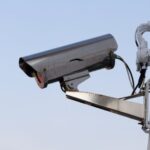
Police Scotland is exploring the potential use of live facial recognition to identify violent criminals. Chief Constable Jo Farrell stated that assessing such technology is part of the force’s duty to keep communities safe. While acknowledging ethical and legal concerns—such as privacy, human rights, and potential biases—Farrell emphasized that the technology could be instrumental in removing violent offenders from the streets.
The force says it is considering all aspects of the technology carefully and aims to implement it in an ethical and appropriate manner if adopted. The initiative reflects Police Scotland’s vision of leveraging technology to enhance public safety while ensuring transparency and maintaining public trust.
LFR has already been in use by law enforcement agencies in other parts of the UK. Earlier this year, Essex Police deployed the technology for the first time during the Clacton Airshow, leading to three arrests connected to domestic and common assaults.
This week, Essex Police reported that the use of live facial recognition technology in Southend city centre resulted in seven arrests over a four-day period. Deployed between Thursday and Sunday, the system provided 14 alerts that led to arrests related to aggravated burglary, domestic assault, assault on an emergency worker, and shoplifting.
The LFR technology scans faces in real-time against a predetermined watch list of individuals of interest. Images of those not on the watch list are immediately deleted to protect privacy. Since its initial deployment, the technology has generated 30 alerts and 16 arrests, with no incorrect alerts reported. Essex Police highlighted the positive public response and used the opportunity to educate citizens about the technology.
Operated from marked police vans, the system flagged individuals wanted for serious crimes, resulting in five positive matches. Chief Superintendent Leighton Hammett highlighted the effectiveness of LFR in locating persons of interest and enhancing public safety. Privacy concerns were addressed by ensuring that images of individuals not on the watchlist were deleted immediately, with no data stored.
This deployment follows earlier trials in Chelmsford and Southend-on-Sea, where the technology was similarly used to target serious offenders and prevent crime.
Source: The Herald, BBC
–
September 25, 2024 – by Tony Bitzionis







Follow Us